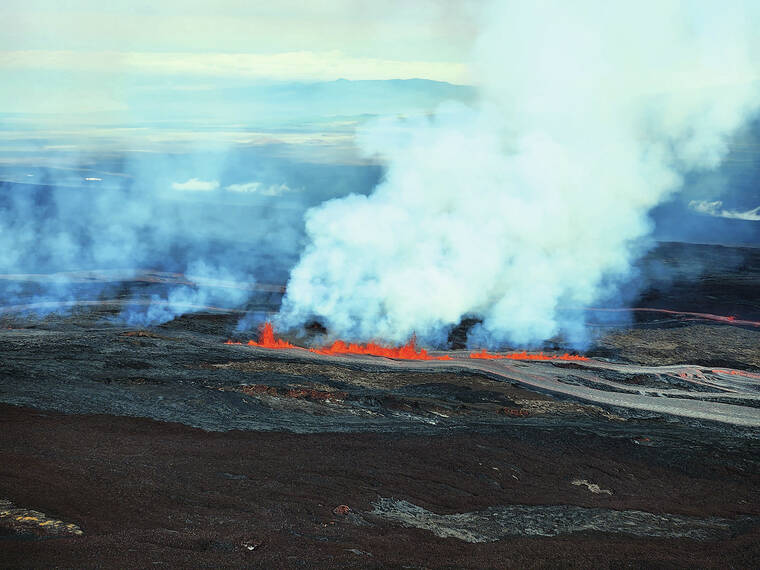Volcanic smog, or vog, along with air pollution can hurt Hawaii student test scores, according to a new study from the University of Hawaii at Manoa, the UH Economic Research Organization and University College London.
“The effects that we are picking up are probably resulting from cumulative exposure, not just in the classroom, but outside of the classroom and over the course of many years even,” said Tim Halliday, co-author, UHERO research fellow and associate professor of economics.
Vog — a mixture of ash, sulfur dioxide and other gasses — can impact the respiratory system, causing difficulty breathing, a sore throat and headaches or watery eyes. While the impact of vog and pollution on health has been studied before, this is the first in-depth analysis of its impact on student learning.
“There’s an increasingly larger literature in economics showing that pollution impacts cognitive functioning in other realms,” said Halliday. “There’s some new evidence showing longer-term exposure to particulates is a risk factor for dementia, for example.”
The study found that Hawaii Island students were disproportionately impacted by air pollutants and vog.
“It’s two things,” Halliday said. “The baseline levels of exposure are much higher on Hawaii Island, and there’s a higher percentage of students who are economically worse off. Everybody was impacted, but the magnitudes were much bigger for the poor.”
The study found that the impact of poor air quality was worse for pupils living in lower-income areas.
“This finding has great implications for environmental justice,” said co-author Rachel Inafuku in a blog post following the release. “Students who are more financially stable face less obstacles in accumulating human capital when air quality is poor, suggesting that pollution contributes to the inequality gaps that we observe here in Hawaii and in the U.S.”
The study looked at the presence of sulfur dioxide and increases in particulates, specifically PM2.5, which are fine inhalable particles.
The authors then compared the data to test scores from Hawaii public school students on the Smarter Balanced Assessment, or SBA, a mandatory math and English assessment for grades three through eight and 11.
Collected between 2015 and 2018, the test scores were matched to particulate and sulfur dioxide levels, with results showing that an increase of 1.84 micrograms per cubic meter of PM2.5 led to a more than 1% reduction in test scores.
With each increase in particulate levels, test scores responded with a corresponding decline.
“If the tests are taken when pollution is higher, student test scores are lower,” Halliday said.
This could lead to a significant impact on student test scores following Mauna Loa’s eruption beginning in late November, the first since 1984.
“Everything comes down to the pollution,” Halliday said. “The eruptions themselves aren’t bad. It’s just the fact that the eruptions produce gasses that, in-turn, form particulates.”
The impact of vog on student test scores was higher in areas with increased air particulates, including Ocean View and southern portions of Hawaii Island.
This led to an unexpected correlation noticed by researchers.
“One of the surprises was that the particulate pollution was affecting kids who were on free or reduced lunch by such a huge magnitude compared to kids who aren’t,” Halliday said, adding the effects of PM2.5 particulates increased by a factor of 10 among those receiving free or reduced lunch, and the effects of sulfur dioxide increasing by a factor of six.
“Pollution can exacerbate existing economic inequalities,” he said of the results.
Email Grant Phillips at gphillips@hawaiitribune-herald.com.

